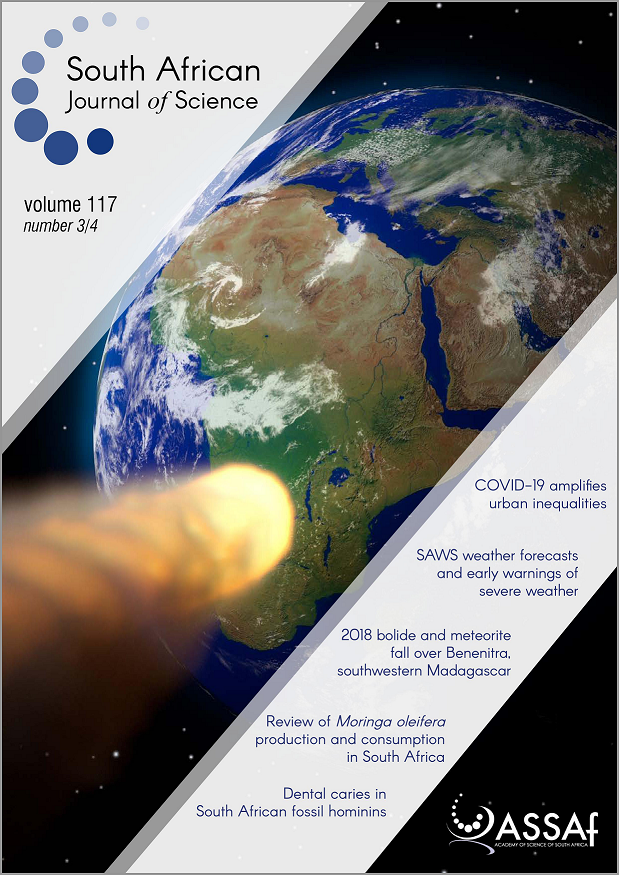Evaluating South African Weather Service information on Idai tropical cyclone and KwaZulu-Natal flood events (with corrigendum)
DOI:
https://doi.org/10.17159/sajs.2021/7911Keywords:
weather extremes, early warnings, floods, Idai, weather forecastingAbstract
Severe weather events associated with strong winds and flooding can cause fatalities, injuries and damage to property. Detailed and accurate weather forecasts that are issued and communicated timeously, and actioned upon, can reduce the impact of these events. The responsibility to provide such forecasts usually lies with government departments or state-owned entities; in South Africa that responsibility lies with the South African Weather Service (SAWS). SAWS is also a regional specialised meteorological centre and therefore provides weather information to meteorological services within the Southern African Development Community (SADC). We evaluated SAWS weather information using near real-time observations and models on the nowcasting to short-range forecasting timescales during two extreme events. These are the Idai tropical cyclone in March 2019 which impacted Mozambique, Zimbabwe and Malawi resulting in over 1000 deaths, and the floods over the KwaZulu-Natal (KZN) province in April 2019 that caused over 70 deaths. Our results show that weather models gave an indication of these systems in advance, with warnings issued at least 2 days in advance in the case of Idai and 1 day in advance for the KZN floods. Nowcasting systems were also in place for detailed warnings to be provided as events progressed. Shortcomings in model simulations were shown, in particular on locating the KZN flood event properly and over/-underestimation of the event. The impacts experienced during the two events indicate that more needs to be done to increase weather awareness, and build disaster risk management systems, including disaster preparedness and risk reduction.
Significance:
This paper is relevant for all South Africans and the SADC region at large because it provides information on:
- the weather forecasting processes followed at the South African Weather Service,
- available early warning products in South Africa and for the SADC region made possible through the public purse,
- the performance of nowcasting and modelling systems in the case of predicting two extreme weather events that had adverse impacts on southern African society, and
- the dissemination of warnings of future extreme weather events.
Published
Issue
Section
License

All articles are published under a Creative Commons Attribution 4.0 International Licence
Copyright is retained by the authors. Readers are welcome to reproduce, share and adapt the content without permission provided the source is attributed.
Disclaimer: The publisher and editors accept no responsibility for statements made by the authors
How to Cite
- Abstract 2563
- PDF 1250
- EPUB 138
- XML 173
Funding data
-
African Academy of Sciences
Grant numbers CR4D-19-11












.png)